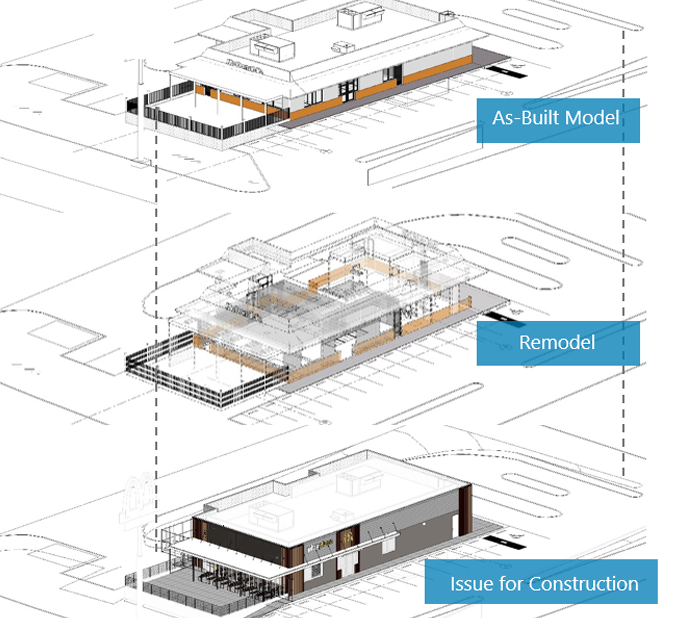Design coordination is not only about managing drawings and software; it's about bringing together visions, timelines, and cultures into one shared language. In this article, we explore three projects that illustrate how this service shapes outcomes across diverse typologies, from global franchises to luxury developments in remote locations.
Complexity can arise from scale, diverse stakeholders, geographic distance, cultural nuances, or varying standards and local requirements. In these contexts, design coordination not only saves time and money — it prevents countless headaches. More than managing drawings, it's about fostering seamless collaboration among architects, engineers, interior designers, suppliers, and clients, anticipating conflicts, streamlining communication, and ensuring a precise project flow.
The following three case studies highlight the importance of this service when applied at the appropriate time in the project life cycle.
1: Multi-site Latin America program for the QSR international brand
Challenges: Strict protocols, tight timelines, coordinating multiple consultants, construction starting with ongoing drawing production, meeting international standards, and working with local materials and workforce availability.
Balancing strict global protocols with local realities, from construction codes to supply chains and workforce capacity, was the first challenge for this top-tier brand. There was no room for improvisation, yet adaptation was essential.

Our role focused on branded architecture and the coordination of international design guidelines with local consultants, ensuring that each discipline (architectural, structural, MEP, and interior) could translate global standards into a coherent, buildable design tailored to local conditions.
Effective and ongoing communication, BIM integration to manage multidisciplinary layouts, and the use of satellite data to analyze site conditions were key factors in achieving a consistent, high-quality rollout.
2: A complex luxury development on a remote island
Challenges: The remote location, where terrain and strict environmental considerations complicated coordination. The program also involved diverse functions with complex geometries and high-quality, technical-resolution standards.
Coordination in this project required both technical precision and cultural awareness. We collaborated with multicultural, multidisciplinary teams across time zones and languages, while meeting exact quality and detail standards.

BIM acted as the common language, essential for managing vast amounts of data, detecting clashes, and keeping consultants aligned across thousands of square feet.
Additionally, clear protocols, focused meetings, flexibility, and open communication became crucial tools — not only for achieving the design intent but for sustaining trust and collaboration across continents.
3: Precision in scale: Interior design for a mixed-use project in the Middle East
Challenges: Large-scale project, mixing office and residential towers. High level of detail and aesthetic coherence across the entire development, while also maintaining unique characteristics that made every tower distinct.
Coordination focused on maintaining continuous communication among designers, consultants, and production teams to ensure rapid updates. It required continuous dialogue between the interior design team and the other disciplines, aligning technical feasibility with design vision.
Standardization, clear BIM workflows, and meticulous information management ensured updates were implemented simultaneously and consistently across all models — maintaining clarity, accuracy, and alignment among all disciplines.
Through this process, we orchestrated communication to avoid information gaps and duplicate efforts, enabling faster decision-making, smoother implementation, and a unified aesthetic language across the project.
Our framework for success
From our experience across scales, programs, and contexts, several strategies consistently enhance design coordination:
# BIM as a shared language: A familiar environment where every discipline aligns and anticipates issues before they reach the site.
# Clear roles and responsibilities: Define who does what, who communicates with whom, and how information flows — clarity saves time and avoids misunderstandings.
# A defined communication strategy: Agree on tools, frequency, and participation. Some topics require full coordination meetings, while others can be resolved through quick, targeted interactions.
# Flexibility and adaptability: Every project — and every team — is different. Technical expertise must go hand in hand with cultural understanding and adaptability across time zones and workflows.
Design coordination is not an add-on; it's the backbone of complex projects. It's what allows ambitious ideas to become real spaces. More than preventing mistakes, it creates a shared vision that aligns diverse talents toward a common goal.
No matter the scale or location, success ultimately depends on one essential element: the quality of collaboration. In your experience, what’s been the biggest challenge in coordinating complex projects, and how did you overcome it?